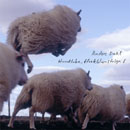


 |
 |
 |
 |
Anders Dahl
“Hundloka, Flockblomstriga 1”
Häpna H.27, CD
3 tracks, 39 Minutes
|
|
Hundloka (cow parsley) is one of our most common meadow flowers; a weed whose distribution is restricted with great difficulty. Hundloka is also the name of three pieces of music which, in similarity to their namesake, grow in areas between the wild and the cultivated, ´twixt nightly woods and lit up cities. Hundloka is the music of the late afternoon, a catnap of the civilization where awake and dreamt hardly will be distinguished from each other.
Track listing: 1. Hundloka - Guitar, Bouzouki, Violin, Prepared Speakers 2. Hundloka - Percussion, Guitar, Bouzouki 3. Hundloka - Clarinet, Recorder, Computer, Guitar, Bouzouki, Percussion |
|
|
---------------------------------------------------------------
|
|
|
Reviews
|
|
|
“Naturen möter ofta teknologi i Anders Dahls musik- och ljudvärld. Han är just nu även aktuell med en ljudinstallation på utställningen Animal World i Borås konsthall. Skivan innehåller tre stycken där Dahl (gitarr, bouzouki, preparerade högtalare med mera) och Henrik Olsson (slagverk) vandrar omkring i en detaljrik och fascinerande klangrymd. Kopplingen till växtriket är något otydlig. Däremot är det helt klart två musiker med hyperkänsliga antenner. Ljuden rör sig som insekter. Mycket, mycket bra.”
Rated 4/5, PM Jönsson, Göteborgs-Posten “Recently flowers seem to be the thing to use to title your CD: petals and monk's horn and now cow parsley. That is what Hundloka means and it is one of the most common meadow flowers: a weed whose distribution is restricted with great difficulty. I wouldn't know, I don't have a garden. The for me unknown Anders Dahl has a CD with three pieces, all called Hundloka, and each is for a set of instruments he plays: guitar, bouzouki, violin, clarinet, recorder, percussion and prepared speakers. The music Dahl produces lies somewhere in between the 'composed' and 'improvised', in all three elements of drone music are in place, but the execution differs a bit. In the first piece things are more mood related, but in the shortest, second piece, things are much more noise related, within the self-chosen format. The most complex piece is the last one (also the longest piece), in which clarinet and recorder sound like recorded by Phil Niblock, but the guitar, bouzouki, percussion and computer play a more chaotic rule, trying to complicate the matters for the two wind instruments. It's a struggle that has no winners, but ultimately it's a complex and great piece of music, just as the other two.” |
|